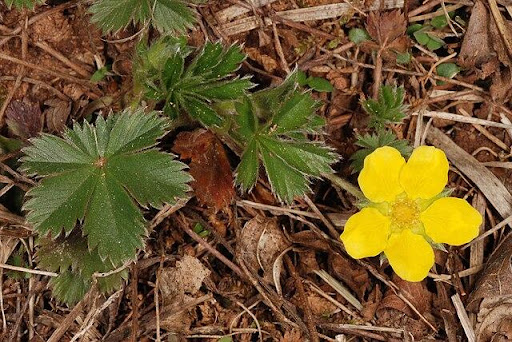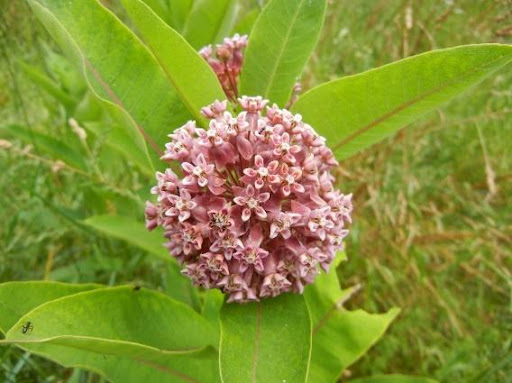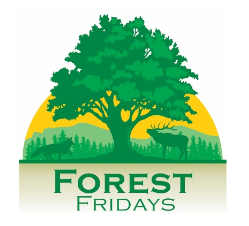Leaves of five, let it thrive
By Chris Firestone, Forest Fridays
May fifth is Cinco de Mayo, a holiday that celebrates the Mexican victory over the French in the Franco-Mexican war. “Cinco” means five in Spanish, so let us discuss plants with five-part flowers and leaves with five leaflets.
Photo: Common cinquefoil or old-field five-fingers, by Douglas Goldman, Wikipedia Commons

An obvious group of plants are cinquefoils in the genus Potentilla and the rose family Rosaceae, whose members include 11 species, four of which are native in Pennsylvania. Cinquefoils generally have five palmately compound leaves and five petals. Common cinquefoil, or old-field five-fingers (Potentilla simplex), is a common native of woodlands, fields, and disturbed areas. Their bright yellow petals in April-June draw attention to their low-growing, sprawling form and five-leaflet leaves.
A characteristic of plants in the rose family is having a five-part flower. There are 28 genera in the rose family in PA, including apples, cherries, strawberries, and blackberries. A horizontal cut through the diameter of an apple will produce a five-pointed star. Flowers have five petals and five sepals; one exception to the five petals is the commonly planted hybrid garden tea rose, having many petals.
Other Pennsylvania plant species with five flower parts are the milkweeds in the genus Asclepias, with 12 native species. Common milkweed (Asclepias syriaca) is ubiquitous in fields, pastures, and roadsides, and is known as the host plant for monarch butterflies and a nectar source for other pollinators.
Photo: Common milkweed

Similarly, “quinque” means five in Latin and if you add folia (or folius) to the end, it means five leaves. Two PA native species with palmately compound leaves of five leaflets are American ginseng (Panax quinquefolius), and Virginia creeper (Parthenocissus quinquefolia). The former is a long-lived herbaceous forest understory plant, and the latter is a flowering deciduous vine in the grape family. Virginia creeper is a great host plant for butterflies and moths, and their fall berries provide food for wildlife.
Below left: American ginseng (Photo by Eric Burkhart)
Below right: Virginia creeper (Wikimedia Commons)
Trees can have compound leaves with five leaflets too. Both shagbark (Carya ovata) and pignut hickory (Carya glabra) have pinnately compound leaves. To determine which species of hickory, just look at the bark. Shagbark hickory got its name from its bark. Both native species are common in Pennsylvania and provide food for wildlife and humans.
Below left: Pignut hickory leaf
Below right: Shagbark hickory
Our biodiversity promotes ecosystem resilience. Let us celebrate these species and the many others that contribute to Pennsylvania’s natural diversity while also appreciating how our cultural diversity strengthens our state. Feliz Cinco de Mayo!
About the Author: Chris Firestone
Chris Firestone is a botanist with 28 years in the Bureau of Forestry, working to conserve native wild plants in Pennsylvania through policy, education, and management of habitat and invasive species. She lives in Potter County and enjoys gardening, foraging, hiking and camping.



